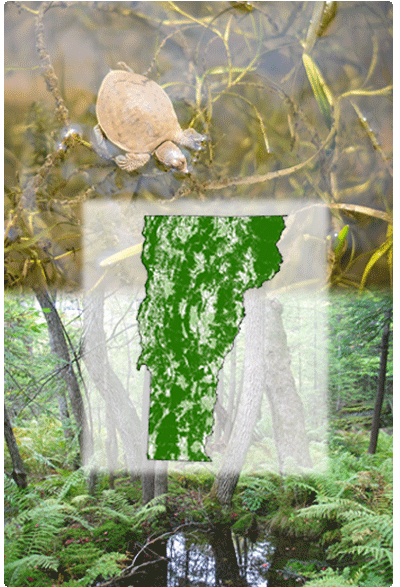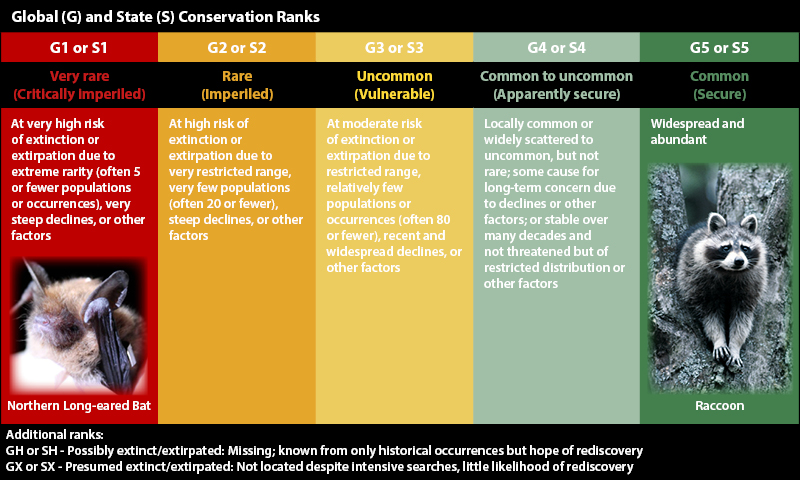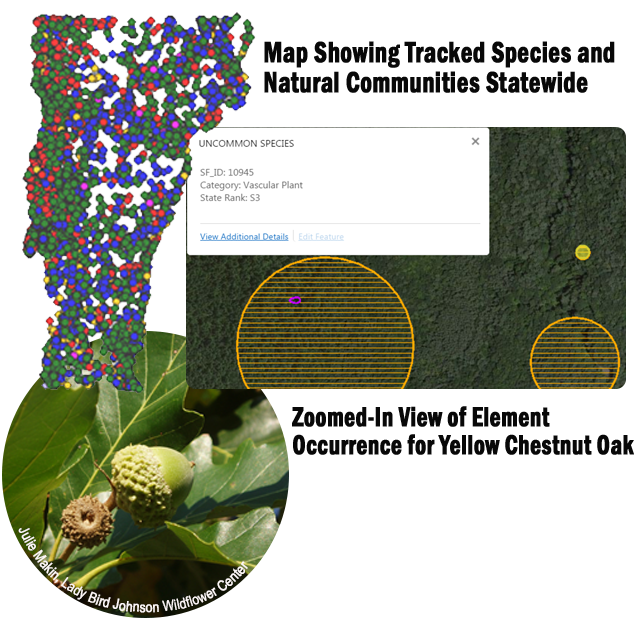Natural Heritage information is objective scientific information, or data, about species and natural communities. It is used for local, state-wide, and regional conservation planning and management, and to monitor and conserve rare, threatened, and endangered species.

Natural Heritage information answers four basic questions.
- What natural communities are in Vermont?
- What rare, threatened, and endangered species are in Vermont?
- Where are they?
- How are they doing?
Where does the information come from?
Wildlife Diversity staff conduct numerous species and natural community surveys to collect Natural Heritage data. The most significant biological and ecological information is mapped, summarized and stored in the Natural Heritage Database.
We also rely on information from other Agency of Natural Resources staff, independent biologists and ecologists, amateur naturalists, environmental consultants, museum specimens, literature, and other biological databases like the Global Biodiversity Information Facility (GBIF) and iDigBio.
How is Vermont’s biodiversity described?
Each species or natural community type is an ‘element’ of biodiversity. An element is the basic unit of the data.
Agency of Natural Resources staff and Scientific Advisory Groups assign ranks to each element based on how likely it is the element will be eliminated from Vermont (State or S Rank) or will become extinct throughout the entire world (Global or G Rank). Factors considered include:
- how many populations there are and how they are distributed
- threats, such as residential development, invasive species, and drought
- current population trends of that species or natural community (increasing, decreasing, or stable?)
Information to rank every element is lacking at this time, so many of Vermont’s species, mostly plants and invertebrate animals, remain unranked (SNR).
What are Vermont’s State Ranks?
S1: very rare
S2: rare
S3: uncommon
S4: common
S5: very common

What information is collected?
Information about S1 and S2 plants and animals is collected. S3 species are tracked as “watch list species” that could become rare over time. Staff scientists and program partners record how many individuals they saw of a given species and other biological information, such as if it was flowering or nesting, from that survey date.
With landowner permission, detailed information is recorded about S1 and S2 natural communities and high quality examples of S3, S4, and S5 communities. Staff scientists and partners document the most common species and the physical setting of each community, including topography, soil, bedrock, water, etc.
Other useful information is also collected, including land ownership, and the condition, size, and landscape context of the community or population.
Over time, these detailed records assist in evaluating the health of the population or natural community.
How are individual communities or species populations (Element Occurrences) ranked?
Each on-the-ground observation of an element is considered an ‘Element Occurrence (EO).’EOs are ranked based on its condition, how large or numerous it is, and the landscape surrounding it.
How is the information tracked?
The locations of significant natural communities and certain plant and animal species are recorded in the Vermont Natural Heritage database’s “master map.” The database also stores information about each element occurrence and element, such as their ranks and other biological information.
The database is essential in understanding the distribution and conservation priorities for Vermont’s plant and animal species and natural community types.

Is the methodology standardized?
The department uses methods developed by the Natural Heritage network and NatureServe to gather, organize, and manage Natural Heritage information. Most network member organizations follow these standard methods, allowing conservation planners access to reliable and consistent information from around the world.
See also:
- Interpreting Natural Heritage Information
- Animal Inventory
- Plant Inventory
- Natural Community Fact Sheets
- Threatened and Endangered Species
- Development Review
- Citizen Reporting Forms for Rare Plants or Animals
- Citizen Reporting Forms for Natural Communities
- List of Natural Community Types with National Vegetation Classification Associations | PDF
- Animal Species Lists
- NatureServe Explorer
